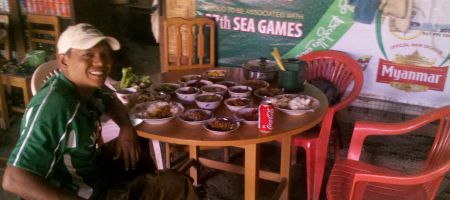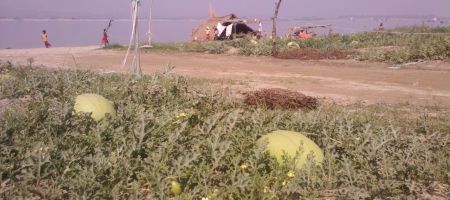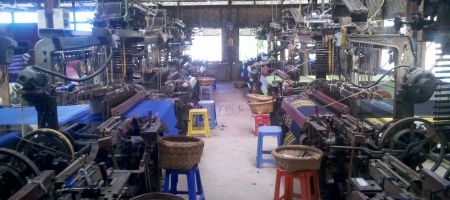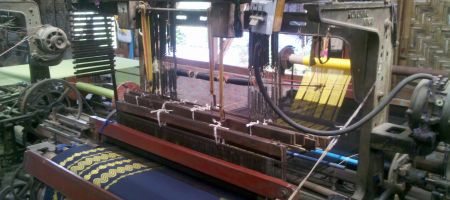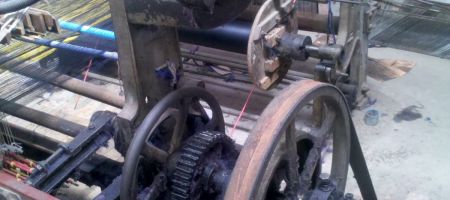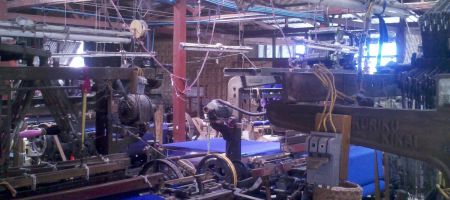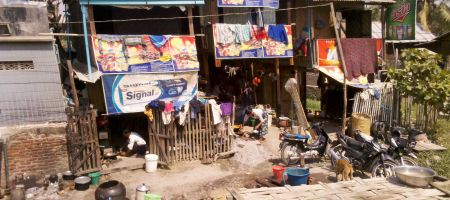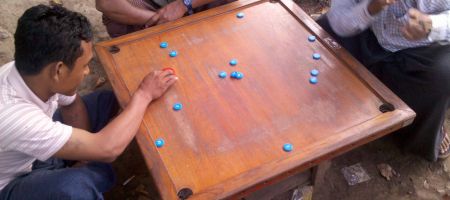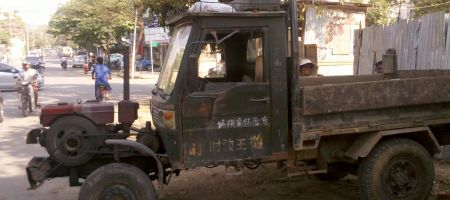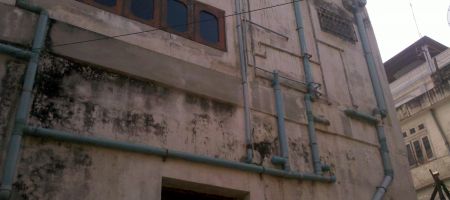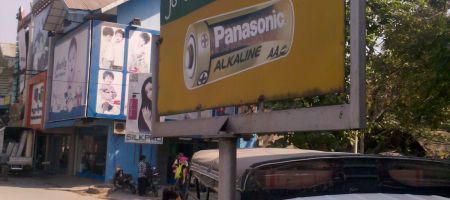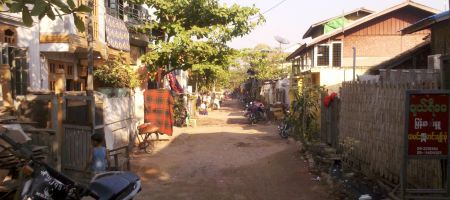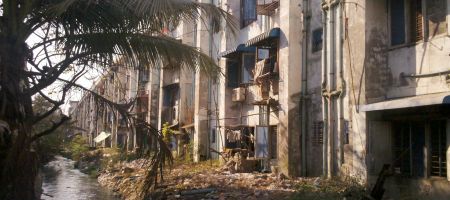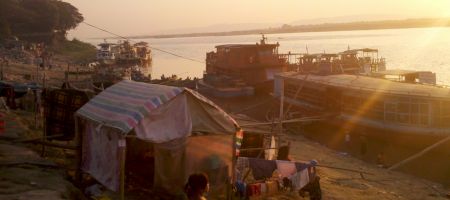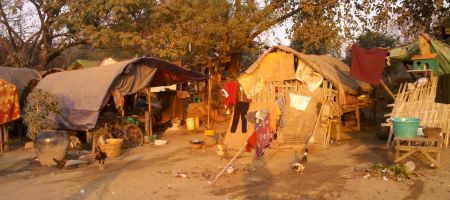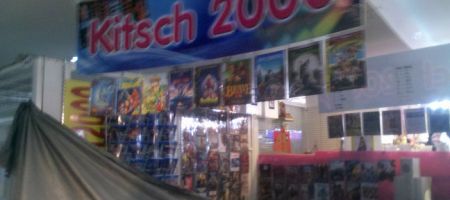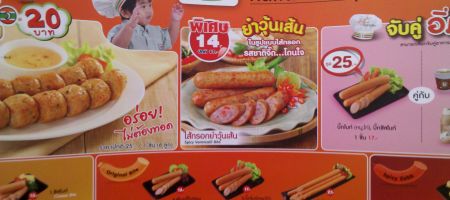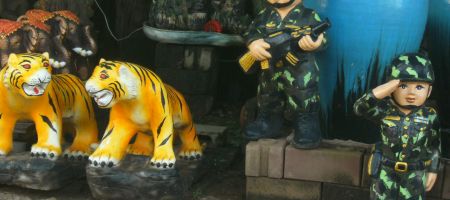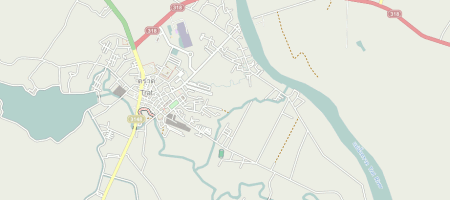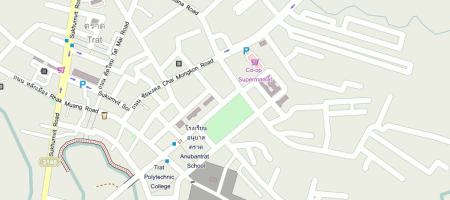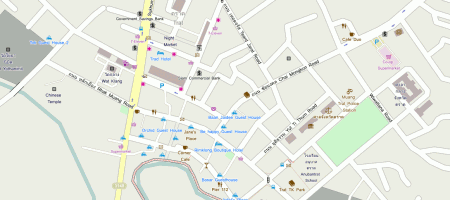Chinlone
Chinlone is a cooperative ball game that is played round every corner in Myanmar. The goal is simple: The ball may not touch the ground. It’s quite similar to Hacky Sack, the ball however is made out of rattan. The players kick the ball with all sorts of tricks to keep it up in the air.
Now, it seems that every second traveler I meet in Myanmar is German. Why is that? No idea, you tell me.
Anyway, one of that crowd is Clemens from Frankfurt. I got into conversation with him and he told me that he comes to Myanmar every two years to train Chinlone with a local team. He is out to promote the game in Germany. Unfortunately, I missed to go to his training because I was at the mediation centre.
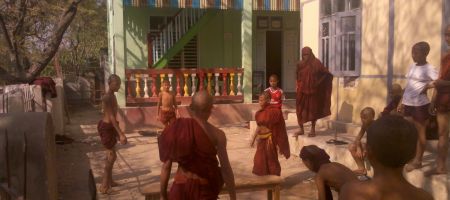
A few children monks playing the chinlone variant with a net in the middle. The rules are a bit like volleyball but of course, they may only touch the ball with their legs and head, not with the arms.
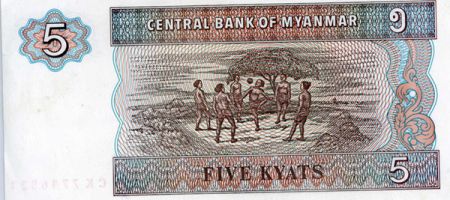
Chinlone is so popular and part of the Myanmese culture that it made it’s way onto the 5 kyat banknote.
German football on the other hand didn’t even make it on the 50 Pfennig coin. Instead, it had a woman planting an oak tree, I never understood this as a boy. The coin-makers of the early BRD seemed to have some obsession with oak trees.
In Myanmar, when you tell people you are from Germany, they enthuse about the country and are like, “Oooh, Germany! Yes, Bundesliga, Bayern Munich! Very good!”. In South East Asia in general, Germany is known first of all for football. Then, also quality technology, but that falls far behind of football.
So, the fat hen which fluttered from the Bundestag onto our Euro coins could easily be replaced by a big round football, after all the shape is already similar. ;-)
By the way, the 5 kyat banknote is worth only 0.00375 Euro now, so it is not really in circulation anymore. The lowest denomination I could get while in Myanmar was a 50 kyat note, and that only because I asked for it. Lena on the other hand still has the full array, a 1 kyat, 5 kyat and a 10 kyat note from when she was in Myanmar over 2 years(?) ago.
Last but not least, here is a short video about some Myanmese playing the cooperative variant at the streetside.

Over 100 articles!
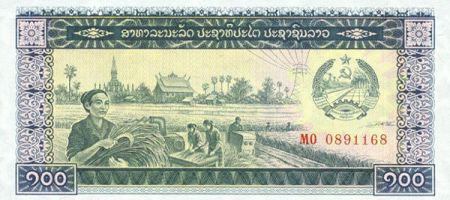
Over 100 articles and more than 6 years I have this blog already! Hooray!
(Above: 100 kip bill from Laos, worth less than 0.01 Euro now)
Comment [2]

In Myanmar, boogers are black
Funny facts with your host, Newton!
And also…
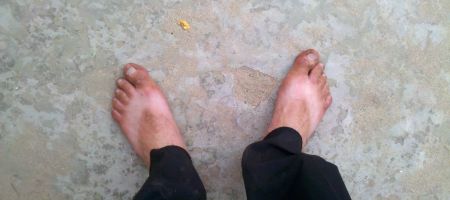
I got one of those famous “Burmese Sunburns” after a day on the motorcycle.
(Not to be confused with the famous “Farang tattoos”)
Comment [1]

Khaing Gyi and the textile factory
Meet Khaing Gyi. Khaing Gyi is 28 years old, comes from an extended family, is a family father with 2 children and currently earns his living as a motortaxi driver in Mandalay. His English is astoundingly good given that practically everything he knows about the language is what he taught to himself and in conversation with foreigners. He only ever went to primary school.
Many travelers who visit Mandalay rent a motorcycle with driver for a day for a flat rate of 15000 Kjat to visit some attractions in and around the town. So I happened to end up with him and it turned out to become an unforgettable experience: He quickly noticed that I am not that interested in seeing the classical tourist attractions, so he went to show me some of the local places as well.
Other than the tourist destinations, we drove through the countryside and through residential back-alleys, both of which are more interesting than they sound at first (just look at the previous article).
A British couple who are photographers made him a website. (And actually, he seems to have a second one. I wonder how that came together. Anyhow, the first one is the one he told me about.
If you go to Mandalay, say “hi” from me.
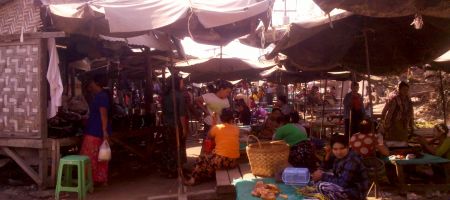
Just a market in the outskirts of Mandalay we stopped at on my request.
Along the river Ayeyarwady there are some melon farms in the tidal area of that river. Khaing Gyi told me that the 3 months or so of winter are the only time in which the area can be used agriculturally because during rain season, the area is flooded and during hot season, it is too dry for anything to grow. Otherwise, the ground seems to be perfect for melons. It is harvesting time now.
The highlight for me was this textile factory hidden in a back alley of some residential area, right next to a ruined chedi. This place was not even on his itinerary of the things he wanted to show me. We just got lost a bit on our way through Mandalay’s suburbs (which look like rural villages) when I heard a loud repetitive sound coming from inside some bamboo houses. When I asked about it, he said we could have a look and stopped. So that is how we got there.
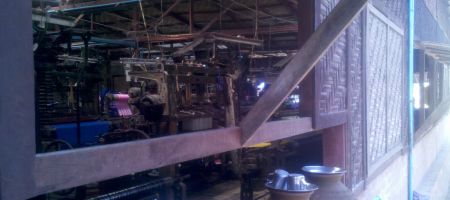
A view inside from one of the windows. The clay jugs you see outside in front is something typical for Myanmar. They are filled with drinking water and are a courtesy for thirsty passers-by.
The factories were quite small (perhaps 4×4 machines each), so small that they might be family businesses. Something I forgot to ask because I was too flabbergasted by the fact they’d just let us march into (and take photos of) their house/factory.
They didn’t seem to mind at all but at the same time didn’t show any obtrusive curiosity. This friendly prudence is something I came to like about the Burmese people. (After all, we are close to India here.)
The machines themselves could have been out of a museum. Cast iron and propelled by a single shaft (per row). But they were in a good shape, as far as I can tell.
Some more photos of the day trip with him:
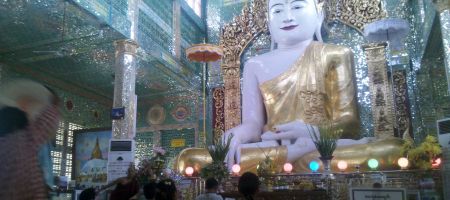
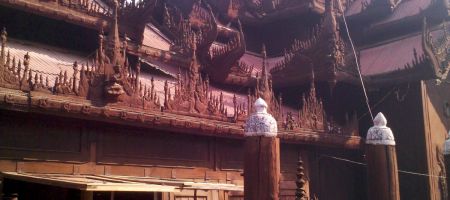
Buddhist temples in Burma look quite different from those in Thailand. Also, many temples are built traditionally out of wood. Just like the royal palace in Mandalay. It burned to the ground in WW2, though.
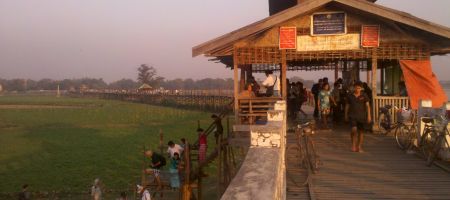
The U Bein Bridge, the longest and oldest teak wood bridge. (See nicer photos.) While I was on it, a supporting beam fell down and floated away. It is indeed very old.
Local fishermen at the same bridge. Those things they were carrying the catch in were their longyis (their trousers). Very versatile. :-)

Board game geeks II
This article is part of a series. Check out part I.
I made this picture in Mandalay, Myanmar.
The game is called Lattougkhon which a local translated to “Fingertouch” for me. It is very similar to Billiard, only that you play it by flicking with your fingers. Like all games that are played (at the streetside) in these countries, it’s of course played with money.
I had a go, and won against the local! Hoho! But we played without money ;-)
Otherwise, Ludo (“Mensch aergere dich nicht”) is quite popular here, as it is in almost all other countries I have visited so far. They don’t use traditional 6-sided dice but instead 6 small shells (as D2s) to roll. That makes a very memorizing sound, I like it :-)

First impressions of Mandalay
Here are some of my first impressions from Mandalay, Myanmar.
A lorry, made in Burma.
Seen on backside of a building in central Mandalay. Was tap water an afterthought here?
The newer street signs are apparently all sponsored by Panasonic. Regarding the street lighting, it seems that no sponsor has been found yet… ;-)
Because in Myanmar’s second largest city, there is none, not even in the center. It gives you an odd feeling to see that it is just 7 o’clock in the evening and the streets are pitchblack, only lighted by the lamps from inside houses and shops (and the cars).
Residential roads in central Mandalay. Many roads that are not main roads are unpaved, even in the city centre. Along the riverside are a few shanty homes built so close to the river that I think they will have to disassemble their homes before the next rain season and move further up or somewhere else. I am guessing the people there work on and about the boats which lie at anchor at the shore.

Burmese Days
It is time to revive this blog, for now, I am in Myanmar!
Actually, I already arrived more than a week ago, but I couldn’t write anything here because I took part in an intensive training in Vipassana meditation. The place had very strict rules, including absolutely no contact to the outer world, no sensual entertainment whatsoever (including reading, writing,…) and absolute silence. I finished this course now, so I can finally indulge myself into reading my emails and stuff like that.
More about that course later.
Myanmar is a fascinating country with kind people who all got a story to tell. So, stay tuned for my impressions.
Comment [2]

Kitsch2000
The Thai (and Laotians) have a hang for the cute and cheesy. The idea for this article came when I saw this in the MBK (big mall) in Bangkok:
Take this advertisment from 7-Eleven for some sausages for example. Cute, the little boy, isn’t he?
Have you seen the VIP buses yet? I mentioned them in a previous article.
The cheesyness in Thai culture does stop at nothing it seems. Traffic police boxes can easily be recognized by the giant plastic model of a police helmet that serves as its roof.
Even the military is not excluded: Like (some) Germans, Thais also like garden gnomes. They have a different style here, of course, but one of the popular shapes is a soldier-gnome. Here:
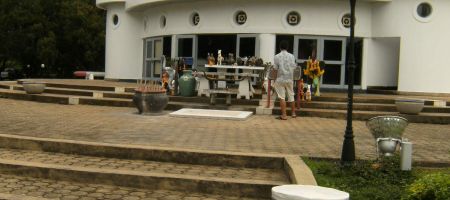
The above picture is of the Ko Chang Naval Battle Memorial (interestingly, the battle was a clear defeat on the Thai side, still if you don’t know the memorial looks something like a victory monument.)
Don’t see anything special in this thumbnail? Then click for the full image!
What about respectable monks in religion? Well, see this article about Thai religion (3rd picture). Though I have seen plenty “chibi”-monks, I have yet to encounter a Chibi-Buddha.

Mapping Trat - Before and after
When I first posted pictures of my mapping efforts for OpenStreetMap in this blog, I noted that it is kinda pointless to show those maps without a before-after view. But then again, you need to take screenshots of that before because the map does not have a powerful history function. This time, I didn’t forget doing that. So here we are (click the image for a full-sized version):
On this zoom level, the changes one can see are all almost exclusively traced from Bing satellite imagery. So to improve the map on this zoom level, no GPS is needed and there is no reason to actually be there. A map based on satellite imagery is a good basis for putting in more detail:
Detail like, most importantly (in my opinion) street names and larger areas which can’t be derived from the satellite imagery alone.
If a city is already mapped from satellite imagery on the above zoom level, it makes future GPS surveys much more effective because the surveyor can for example just walk down the main street and note down the names of the side-streets from the signs instead of having to walk up every alley to trace where it is leading or to see the extend of an area.
On OpenStreetMap, one can map almost everything. It is possible to map every shop, it is possible to map every building with housenumbers, storeys, type of roof, under construction or not, what type of building etc. etc.
Why?
Because everyone decides for himself what he deems important and what not. Also, the data on OpenStreetMap can be used for quite some different purposes, not only for GPS navigation. Perhaps the name is misleading, it should be called OpenWorldMap. And unlike in the Wikipedia, there are no “relevancy discussions”.
For example there is a project that strives to add the necessary information to the database to display the map in 3D.
So when surveying, I restrict myself to note down certain points of interests that I deem relevant for myself. Most importantly, street names, but also: banks, atms, post offices and boxes, pharmacies, supermarkets, guest houses, restaurants, bars and cafes, bus stands and stops, temples, schools, hospitals, marketplaces, public buildings and the like.
So, how complete is the map in your neighborhood?
Comment [2]

Tobi shows pictures of cars
In this post, I want to show you some more exotic vehicles I found while traveling through Thailand, Laos and Vietnam.
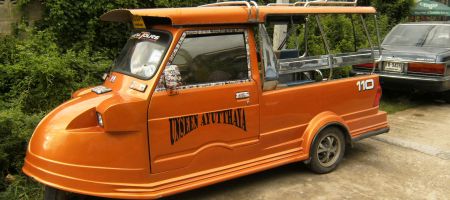
According to my research, this is the classical, old Tuk Tuk model that originated from Japan. Seen in Ayutthaya, Thailand.
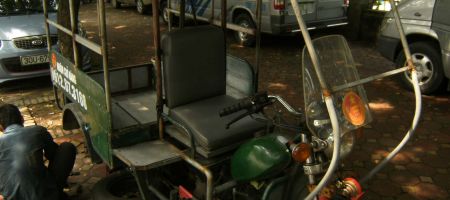
A Vietnamese auto rickshaw, a curiosity even in Vietnam. It looks much less like a Thai Tuk Tuk than like a Laotian Skylab.
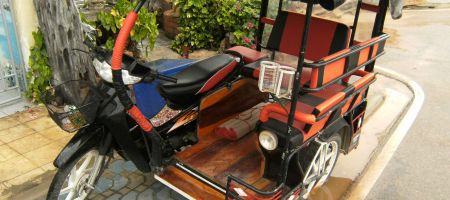
Also quite a rare construction is the motorcycle with a sidecart that is not dedicated as a cargo area but for person-transport like a Tuk Tuk. This one is a very nice specimen (note the cup holders) :-).
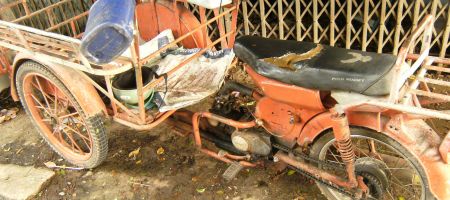
This crossbreed of a motorcycle and a pushcart is not a custom modification but a type of motorcycle. For some reason however they are always in such a shitty state. In Vietnam, side carts are much more popular than this construction.
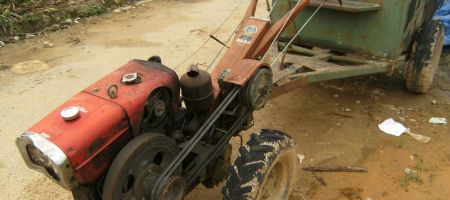
This “minimalist” tractor is all over South East Asia in rural regions. I remember seeing those things in Nepal as well.
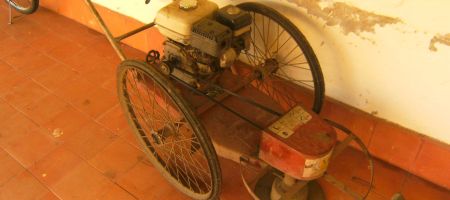
What is this, a gun carriage? Nope, it is a lawn mower :-).
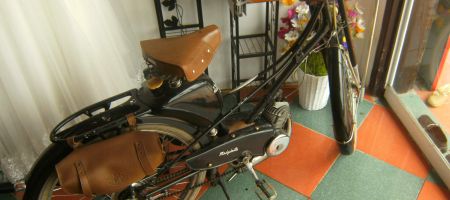
This oldtimer moped was standing in a shop that sold wedding dresses as a decoration in Vietnam. I saw it nowhere on the street though. Can you read the manufacturer? I’d be curious who once produced this.
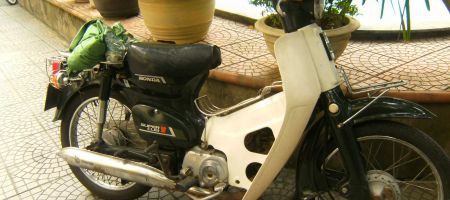
The Honda Super Cub 50, a classic. Apparently I am not the only one who fancies the design of this one. I have seen quite a few modern replicas of this out-of-production model from Chinese companies now.
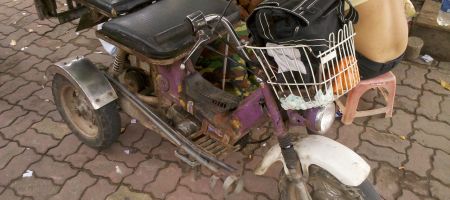
Also in Vietnam: This is a Honda Chaly, the small sister of the Honda Dream, modded into a tricycle. It is not seen too often on the streets of South East Asia but, fun fact, in contrast to the Honda Super Cub and Dream, this one was marketed in Europe as well.
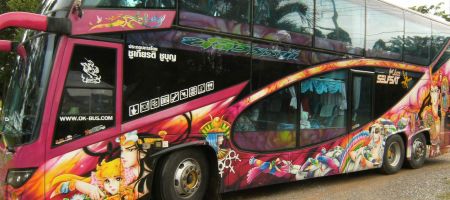
I reckon that I so far only posted pictures of motorcycles and the like.
Well, after all I was in Vietnam. For change, this is a typical Super VIP bus in Thailand. Most of the upper-class inter city buses are painted all over with cheesy anime motives and quite professionally so I have to admit.
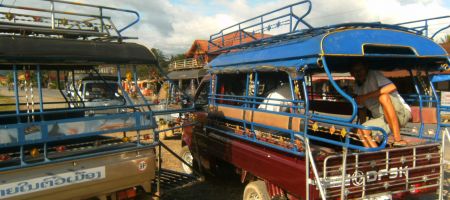
In Laos, Song Thaeos (Two rows) are the first (and in most places the only) option for public transportation around towns. They are what the name suggests: pickup trucks with a roof and two benches built in. They are also very common in Thailand.
Comment [1]

